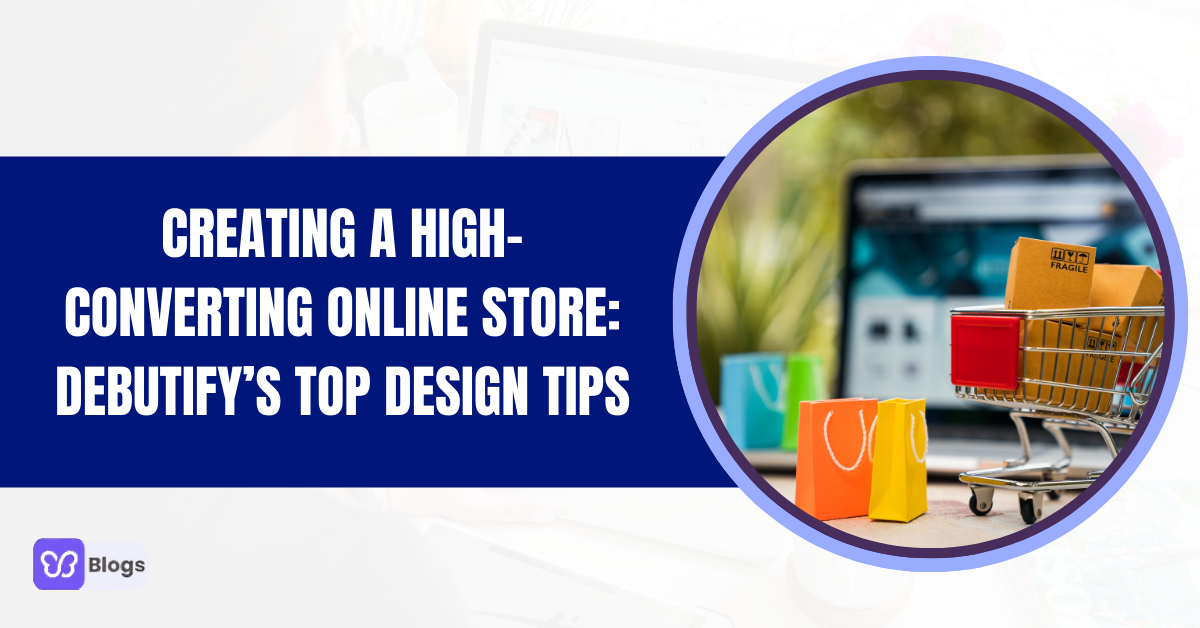If you run an ecommerce store, you naturally want visitors to your site to fill up their carts, complete the sale, and keep coming back for more. However, that’s not how it always works in the real world. Consumers are always looking for information and don’t always act the way you want them to – because, as you’d agree, they’ve unlimited choices and a world full of distractions online. The diagram below shows how users interact with your online store at every step of the journey. Notice how the percentage of sessions reduces from the product page views to sessions with add-to carts and the actual sessions with transactions.
Evidently, you cannot convert a customer in the first interaction most of the time. Besides, the bounce rate is relatively high in the e-commerce section, as is visible in the above image. However, what you can do is bring the customers into your ecommerce conversion funnel to begin converting them from leads into paying customers.
What Is An E-Commerce Conversion Funnel
An e-commerce conversion funnel depicts the route taken by your customers from the time they first become aware of your brand to making a purchase. However, a regular sales conversion doesn't always work in real life.
Let's understand this by looking at the traditional customer journey format that is the basis for a conversion funnel. Typically, a customer journey is divided into five stages:
- Discovery: This is the stage when a visitor lands on your website
- Interest: The stage when a visitor views your product page
- Intent: The step when the visitor adds a product to their shopping cart.
- Purchase: The last stage is when the visitor finally purchases a product and becomes a customer.
- Engagement: This stage is where you must stay in touch and keep your customers engaged after the sales process to encourage loyalty and repeat business.
But do you think customers always follow this linear path? In the actual ecommerce world, there’s no straightjacket formula for a customer journey. In fact, every customer passes through a unique journey, which is non-linear.
What this means is a visitor might enter and exit a conversion funnel at different stages. For instance, June might see a product advertised on Instagram, check some reviews, and purchase it. On the other hand, Jenny might want to compare products from other sites after seeing the reviews and before deciding to make a purchase.
Once you can understand this and comprehend how users experience each stage of the funnel, you can pinpoint what they love about the buying experience and identify the roadblocks to optimize their journey with your brand.
Breaking Down A Conventional Sales Funnel
As discussed, all of your customers have different shopping habits and pass through your conversion funnel differently. But how do you make the process work for everyone? One idea is to divide the process into three distinct stages, as discussed below:
1. Top Of The Sales Funnel
The top of the sales funnel is the widest part of the funnel, with the largest number of user interactions. It signifies the earliest part of the user journey when they are still identifying their challenge and looking for a trusted source of information to rationalize their problem and find a viable solution.
For instance, a business owner might think: “Why is my customer satisfaction low.” At this stage, he is looking for information to find out the potential reasons behind the low user engagement. So, if you’re a customer engagement software firm, you’d want to share educational content like blog posts, videos, and infographics to guide users through their queries at this stage.
2. Middle Of The Funnel
This is the stage where visitors have turned into leads. They’ve moved further down the funnel by defining their problem and are now looking for solutions.
The questions are no longer generic. Following the above example, the pet owner will now have more specific queries like, “What can I do to increase customer engagement?”
Of course, they might not be looking for specific products right now, but they’re looking for the types of solutions available to them. For instance, “Do I need to upgrade my customer service standards?” Or “Do I need to switch to live chat?”
To help prospects identify the right solution at this stage, you can provide in-depth guides, pros versus cons lists, comparison-style articles, case studies, etc. Once your leads are qualified, you can ask them various questions to decide whether your product is the right fit for them or not.
3. Bottom Of The Sales Funnel
This is the final decision-making stage of your funnel. Here, your leads know everything about their problem, and their questions become vendor-driven. For instance, a lead may ask:
- Does Vendor 1 provide more features than Vendor 2?
- What is the service standard of vendors 1 and 2?
You need to highlight your product’s value here, keeping in mind the prospect's needs, problems, budget, and other concerns. To engage prospects at this stage and convert them into paying customers, you may share live demos, product feature videos, competitive analysis, and FAQs.
Now that you know the type of content that’s going to click with your users at every stage, how can you increase the number of leads passing through that funnel to boost the ROI of your content? Here are some tips for every stage of the conversion funnel to increase engagement, even for non-linear customer journeys.
How To Optimize Your Ecommerce Conversion Funnel According To The Various Stages Of The Customer Journey?
The customer journey is divided into five stages that we will discuss according to their place in the conversion funnel.
1. Discovery Stage
The top of the funnel, or the discovery stage that we mentioned above, is very important for your brand. While we already discussed the content you may use at this stage, there are a few additional steps you can take to improve customer experience, such as:
Gather User Data For Personalization
In a non-linear customer journey, users may find you from multiple sources – LinkedIn ads, Instagram, Facebook, Google search, etc. This provides you an opportunity to collect vast amounts of data on users and their relation with the various referral sources, which will help optimize the funnel’s remaining stages.
Collect User Feedback
With the maximum number of people entering and leaving your funnel at this stage, it is the right time to collect feedback about what’s working and not on your site. Your chatbot will come in handy in surveying visitors by automatically asking the survey questions each time a prospect is about to leave a page. A chatbot can also offer proactive help if a user lingers around on a page for too long, perhaps confused about the choices.
Other ideas to collect feedback include e-surveys through pre-set forms and pop-up notifications that might offer a discount or another incentive, compelling users to stay back or at least share their thoughts before leaving.
Invest In Omnichannel Marketing
Modern customers shift between multiple devices and platforms in a day, and your digital assets must be in sync, providing a seamless experience across all the major touchpoints preferred by your users.
2. Awareness & Research
The middle of the funnel can be divided further into two distinct stages. Let’s see how.
I. Awareness Stage
At this stage, prospects are getting to know you and your products. They might visit your website and social media sites and look for social proof of your brand. To ensure they have the best experience possible, you can take the following steps:
Invest In Your Website
Create a responsive website with easy navigation and attractive design and make it as easy as possible for visitors to find the information they need.
Make Use Of Customer-Generated Content
Publish testimonials, case studies, and user videos and create community-based content, and other types of customer-generated content to build social proof for your product or service.
Build A Knowledge Base
Easy navigation and filters supported by well-thought-out FAQs will hold your visitors’ interest and nudge them closer to converting by understanding your solution better.
So, consider investing in knowledge-based solutions to help your customers find answers to their questions and learn more about your products/services.
II. Research Stage
By now, the users know their problem, and they’re showing clear signs of being ready to purchase a solution. They might even add an item to the cart to review it later. So what can you do to optimize their experience?
Elevate Your Shopping Experience
Create a seamless shopping experience. Make it quick, easy, and simple to compare and add products to your cart.
If you see users wishlist items or abandoning their carts, send them personalized emails highlighting the uniqueness of their chosen products. You may even offer time-sensitive discounts that will compel them to complete the purchase in the next stage.
Retarget Users
Retargeting users is also an important strategy at this stage. As users are searching for alternatives, you may retarget them with highly personalized email campaigns to improve your chances of conversion.
Purchase Stage
This is the last stage of the journey, where visitors officially turn into paying customers. However, to increase the number of visitors reaching this stage, you can implement the following measures:
Create A Straightforward Checkout Process
Make it easy for users to navigate from the product page to the checkout page. User clear call-to-action (CTAs), avoid lengthy data capture forms, and make it as simple as possible to complete the purchase.
Offer Multiple Payment Options
You don’t want a visitor leaving because you don’t accept their choice of payment method. It is, therefore, best to offer multiple payment options to increase your chances of getting conversions.
Be Available For Support
Yes, modern-day non-linear customer journey requires help from customer support at various stages of their customer journey. And, mostly even before the purchase. Let’s better understand it with the help of an example:
Let’s say you run an ecommerce business that sells shoes. You introduced your product to the audience via different channels, made them visit your online store and browse through it, and, in some cases, even retargeted them with ads before finally convincing them to make a purchase.
But, that is not it. What if a user adds shoes to the cart, selects a size, goes to the checkout page & backs off? They might be having an issue judging the size fit of the shoe or probably any other issue. But, it’s important to understand that a live chat option can come as a handy way to prevent that user from abandoning the cart & churning away.
You can use the live chat widget to talk to the user directly, ask them about the reason for abandoning the cart, and help them finish the purchase.
If you are running your ecommerce store on Shopify, there are many live chat software that provide Shopify integration.
Read our guide on “18 Great Live Chat Apps” to know more about live chat and its application in the ecommerce industry.
Post-Purchase Stage
Here’s a bonus section – the post-purchase stage, where the engagement begins. Yes, your customer journey only really starts once a prospect buys from you and turns into a paying customer. You need to keep them constantly engaged by sending them relevant and personalized content, delivering better customer service, listening to their feedback, and acting upon it.
Encouraging users to follow you on social media, creating loyalty programs for existing customers, and sharing helpful videos, how-tos, webinars, and blog posts to help users derive the maximum value from your content with content curation and content refresh is all part of the post-purchase stage funnel.
The Wrap
We’ve all heard about the ecommerce conversion funnel, but little thought is given to its optimization. If your conversions are low, it will help you if you carry out a funnel analysis to figure out the roadblocks and create a more seamless journey for your users, irrespective of their entry and exit points in the funnel. The above-mentioned strategies will help you in optimizing your conversion funnel and boost your sales tremendously.
About The Author
Savan Kharod
Savan Kharod is a Digital Marketing Professional at Acquire. He loves to share his knowledge and experience in digital marketing, social media marketing, customer service, and growth marketing. In his free time, Savan likes to backpack and explore new places. You can reach out to him on LinkedIn or Twitter.



